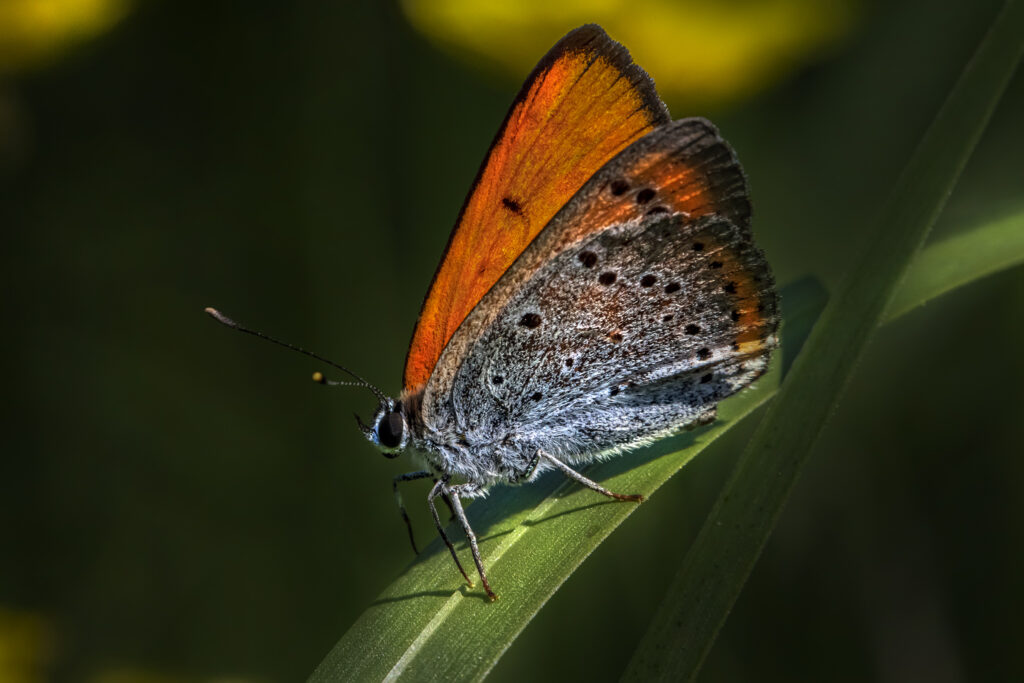
The Large Copper (Lycaena dispar) is a captivating butterfly species renowned for its striking appearance and fascinating life cycle. Here’s a review of this remarkable insect:
Appearance:
- The Large Copper butterfly is aptly named for its impressive size and vivid copper-colored wings, which gleam in the sunlight.
- Its wingspan typically ranges from 40 to 50 millimeters, making it one of the larger species within the Lycaenidae family.
- The upper side of its wings features a beautiful combination of bright copper hues, often with dark markings and a delicate fringe along the edges.
Habitat and Distribution:
- The Large Copper butterfly is predominantly found in Europe, with populations occurring in various countries across the continent.
- It typically inhabits open habitats such as marshes, wetlands, meadows, and grasslands, where its larval host plants are abundant.
Life Cycle:
- The life cycle of the Large Copper butterfly follows a typical pattern for butterflies, beginning with eggs laid by the adult female on the leaves of its host plants.
- The larvae (caterpillars) hatch from the eggs and feed on the host plants before pupating and eventually emerging as adult butterflies.
- One notable aspect of the Large Copper’s life cycle is its close association with specific plant species, particularly sorrel (Rumex spp.), which serves as its primary larval food source.
Conservation Status:
- The Large Copper butterfly faces various threats to its survival, including habitat loss, degradation, and fragmentation.
- Populations have declined in many parts of its range, leading to its classification as a species of conservation concern in some areas.
- Conservation efforts aimed at preserving and restoring suitable habitat are crucial for ensuring the long-term survival of this beautiful butterfly species.
Ecological Importance:
- Like all butterflies, the Large Copper plays a vital role in ecosystems as pollinators, contributing to the reproduction of flowering plants.
- As larvae, they also serve as food sources for various predators, helping to maintain ecological balance within their habitats.
In summary, the Large Copper butterfly is a captivating and charismatic species known for its stunning appearance and ecological significance. Despite facing challenges, efforts to conserve and protect its habitat are essential for ensuring that future generations can continue to appreciate its beauty in the wild.
Visited 264 times, 6 visit(s) today
Views: 514
Subscribe to the newsletter:
